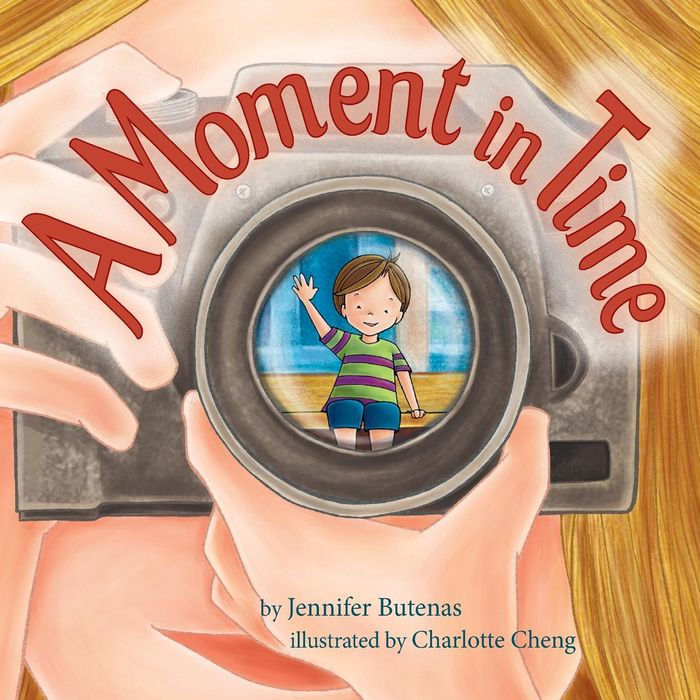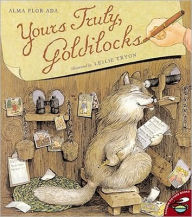When a family has to leave their house and move to a small apartment, it’s hard to let go of things—but having one another is what counts.
Almost everything Callie’s family owns is spread out in their front yard—their furniture, their potted flowers, even Callie’s bike. They can’t stay in this house, so they’re moving to an apartment in the city. The new place is “small but nice,” Mom says, and most of their things won’t fit, so today they are having a yard sale. But it’s kind of hard to watch people buy your stuff, even if you understand why it has to happen. With sensitivity and grace, Eve Bunting and Lauren Castillo portray an event at once familiar and difficult, making clear that a home isn’t about what you have, but whom you hold close.
From the Publisher
While the topic is an extremely tough one, Bunting tackles it with her usual grace and poise. The clear and concise writing is a wonderful choice for the subject matter. ... A vital purchase for collections everywhere.
—School Library Journal (starred review)Callie's first-person observations reveal her distress, while poignant watercolor-and-ink illustrations reinforce her emotions through deft use of white space, color washes and strong outlines that capture postures and facial expressions. Images of forlorn Callie surrounded by a yard full of possessions, sad Callie hugging Sara, distraught Callie grabbing her bike and Callie's parents comforting her visually tug the heart. A simple, moving tale of a family in transition.
—Kirkus Reviews (starred review)
Castillo’s (Nana in the City) gentle scenes soften the family’s sadness.... Bunting captures the way loss can take a family’s possessions while leaving their love for each other intact.
—Publishers Weekly
...a quietly domestic, visually accessible style that offers a feeling of stability, which helps cushion the sadder implications of the story. It’s useful to have a story where moving may be no adventure for anybody in the family, but where things will still be okay.
—Bulletin of the Center for Children's Books
The story’s focus on having to move due to reduced circumstances is a welcome addition to books about contemporary problems.
—Booklist
Castillo’s warm and restrained ink and watercolor illustrations capture the emotions without overwhelming the reader. A lovely and honest story about a hard topic.
—Kirkus Reviews
This simple yet powerful picture book will resonate with any reader who has experienced loss and engender empathy among students who may be in a position to help those who have.
—School library Connection
A straightforward, heartfelt story.
—Horn Book
A quietly wrenching yet ultimately comforting story of a family adjusting to straitened circumstances.
—The Wall Street Journal
Publishers Weekly
02/09/2015
Bunting (Washday) imagines a girl in a polka-dotted pullover watching as strangers at her family’s yard sale haggle over furniture that was hers. Her family is about to move from a house into a small apartment: “It’s something to do with money,” she confides. She’s jolted when a man with a beard loads her bicycle onto his truck. “We told you, sweetie,” her father explains. “We have no place to keep it.” Bunting handles these scenes with sensitivity, making deep emotions plain. When a woman makes a joke at the end of a long day (“Aren’t you just the cutest thing?... Are you for sale?”) the girl is undone. “You wouldn’t sell me, would you?” she asks her parents, crying hard. “Not for a million, trillion dollars,” her father assures her. Castillo’s (Nana in the City) gentle scenes soften the family’s sadness. And while the conclusion is a shade optimistic (“We don’t really need anything we’ve sold”), Bunting captures the way loss can take a family’s possessions while leaving their love for each other intact. Ages 3–7. Illustrator’s agent: Paul Rodeen, Rodeen Literary Management. (Apr.)
Children's Literature - Barbara L. Talcroft
Bunting is famous for her explorations of societal problems seen from a child’s point-of-view. She has tackled many subjects, including homelessness (Fly Away Home) and race riots (Smoky Night)—this time it is the trauma of losing a home and moving to a smaller space. Little Callie observes her parents’ yard sale of almost everything they own without any understanding of its cause. Their quaint little house stands on a street of similar houses surrounded by pine trees and bushes, softened and made nostalgic by Castillo’s naïve-style ink and watercolor illustrations evoking a child’s paintings. As strangers arrive to pick through their possessions, Callie experiences bewilderment, pain at losing her best friend, outrage when a man buys her bike, and sadness at her father’s evident emotion. One woman even jokes with her, “Are you for sale?” causing her to panic, though her parents rush to hug and reassure her. After the sale, the empty house is especially poignant, as are her words of acceptance: “it’s OK, because we do not really need anything we’ve sold.” Since the reader knows nothing about their situation (does Dad have a job in the city or what?), the only clue to future happiness is that she will have a fun foldout bed in the tiny apartment. But what about the vanished bookcase and books, bike, easel, and radio that we have seen? The lesson is that closeness of a family is more important than material things, though it is hard to find the usual note of hope in this ending. In contrast, Castillo’s own Caldecott Honor Book, Nana in the City (Clarion, 2014), avoids portraying a move, while showing a little boy’s fear of noisy, overwhelming New York, as his grandmother points out the pleasures and treasures of a big city to which she has already adjusted. Reviewer: Barbara L. Talcroft; Ages 4 to 7.
School Library Journal
★ 01/01/2015
PreS-Gr 1—Opening on a yard full of items for sale, this picture book tackles the difficult discussion of transitioning to a smaller home or apartment. Callie, whose family is having the sale, watches as people slowly pick their way and prod through her family's items and memories. A particular heart-wrenching moment comes as a woman offers five dollars instead of 10 for a headboard because it is covered in crayon marks. Callie reflects, "I wish I hadn't put the crayon marks on there. They were to show how many times I had read Goodnight Moon." Several other small heartbreaks occur for Callie. Her bicycle is sold, she must explain to her best friend why she's leaving ("I don't know. It's something to do with money"), and she has to endure a well-intentioned woman asking, "Are you for sale?" While the topic is an extremely tough one, Bunting tackles it with her usual grace and poise. The clear and concise writing is a wonderful choice for the subject matter. The soft ink and watercolor illustrations with thick black lines portray the text excellently and without unnecessary additions. While the topic of moving is covered in a multitude of picture books, this one looks at it from a difficult perspective that most authors choose to avoid or gloss over. A vital purchase for collections everywhere.—Brooke Newberry, La Crosse Public Library, WI
Kirkus Review
★ 2015-01-20
When her parents hold a yard sale to downsize prior to moving, Callie experiences mixed emotions until she realizes she still has what's most important.Callie and her parents are moving from a house to a "[s]mall but nice" apartment. Shocked to see "[a]lmost everything" they own for sale in their front yard, Callie watches people sorting through their possessions and asking prices. She's chagrined about crayon marks on her bed's headboard that lower the price and angry as a man loads her bike into his truck. When her best friend, Sara, asks why they're moving, Callie says it has "something to do with money." Callie hates "people buying our stuff," and she's horrified when a woman jokingly asks if she is for sale. Reassured by her parents and back in their "almost empty house," Callie realizes they "don't really need anything they sold," and she and her parents will "fit" into their new place—and that's what matters. Callie's first-person observations reveal her distress, while poignant watercolor-and-ink illustrations reinforce her emotions through deft use of white space, color washes and strong outlines that capture postures and facial expressions. Images of forlorn Callie surrounded by a yard full of possessions, sad Callie hugging Sara, distraught Callie grabbing her bike and Callie's parents comforting her visually tug the heart. A simple, moving tale of a family in transition. (Picture book. 3-7)
Read More
















